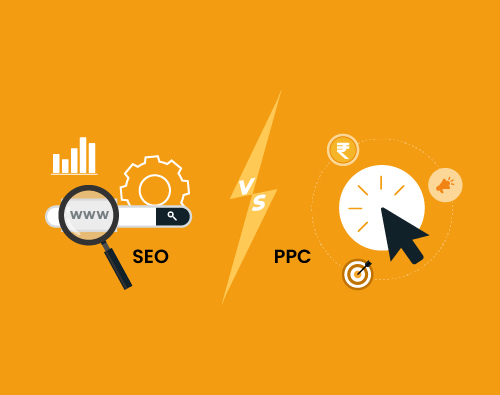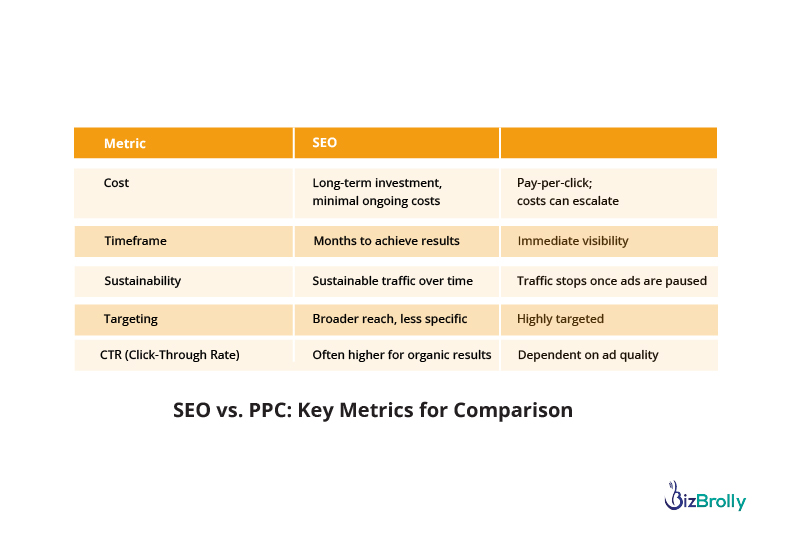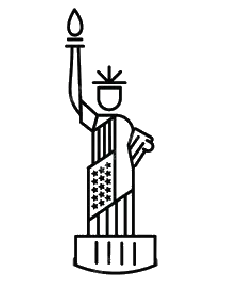SEO vs PPC


The digital marketing world presents a dynamic and challenging environment, where businesses must navigate a variety of strategies to stand out, attract audiences, and drive conversions. Among the most impactful methods are Search Engine Optimization (SEO) and Pay-Per-Click (PPC) advertising—two powerful tools with distinct approaches to achieving visibility. SEO is rooted in organic growth, leveraging optimized content and search engine algorithms to secure higher rankings and long-term results. On the other hand, PPC offers instant exposure through paid advertisements, allowing businesses to capture attention swiftly and target specific audiences.
However, with the ever-changing landscape of search engine algorithms and consumer behavior, the effectiveness of these strategies continues to evolve. This blog delves into the nuances of SEO and PPC, exploring their benefits, limitations, and how the latest algorithm updates are reshaping their roles. Whether you’re considering one over the other or a balanced combination, this guide will help you make an informed choice tailored to your business goals.
Search Engine Optimization (SEO) is the practice of enhancing a website’s visibility and ranking on search engine results pages (SERPs) through organic methods. It involves aligning website content and structure with search engine algorithms to attract more traffic and improve online presence.
This focuses on optimizing individual web pages to improve their relevance and readability. It includes crafting high-quality, keyword-rich content, using effective meta tags, and ensuring proper headings and alt text for images.
Off-page strategies revolve around building a website’s credibility through external means. The primary focus is on gaining high-quality backlinks from authoritative sites, which help improve domain authority and trustworthiness.
Technical SEO ensures a website is structured for optimal search engine crawling and indexing. It involves improving site speed, ensuring mobile responsiveness, and securing the site with SSL certificates. Additional considerations include optimizing site architecture and fixing broken links.
By integrating these elements, businesses can improve their website’s visibility, attract relevant audiences, and achieve long-term growth in the competitive digital landscape. Effective SEO practices not only drive traffic but also enhance user experience, creating a win-win for both users and search engines.

Cost-Effective: While SEO requires an upfront investment in time and resources, the ongoing costs are relatively low compared to paid advertising. Once you achieve strong rankings, you can enjoy consistent traffic without having to continuously pay for visibility.
Builds Trust and Credibility: Websites that rank organically are perceived as more authentic and trustworthy by users. Strong SEO practices, like providing valuable content and earning backlinks, enhance your brand’s reputation and authority in your industry.
Delivers Sustainable Results: Unlike paid campaigns that stop delivering results once the budget is exhausted, SEO provides lasting benefits. Well-optimized content continues to attract traffic over time, especially if updated regularly to stay relevant.
Takes Time to Show Results: SEO is not a quick fix. Building rankings and organic traffic can take months, especially in competitive markets. It requires consistent effort, including content creation, optimization, and link building, to achieve significant results.
Requires Constant Adaptation: Search engines like Google frequently update their algorithms, and these changes can impact your website’s rankings. Staying ahead demands continuous monitoring and refining of your SEO strategy to ensure compliance and maintain visibility.
Pay-Per-Click (PPC) is a digital advertising model where businesses pay a fee each time a user clicks on their ads. These ads are typically displayed on search engine results pages, social media platforms, and other online spaces, offering companies a way to drive targeted traffic to their websites.
Keyword Bidding: Advertisers select keywords that are relevant to their business and bid on them in the hopes of their ads appearing when users search for those terms. The more competitive the keyword, the higher the bid required.
Ad Quality Score: Platforms like Google evaluate ads based on factors such as relevance to the search query, the ad’s click-through rate (CTR), and the user experience on the landing page. Ads with a higher quality score may see lower costs and better ad placement.
Targeting Options: PPC campaigns can be highly customized. Advertisers can target users based on specific demographics, interests, behaviors, and even geographic locations. This ensures that ads are shown to the most relevant audience, improving the likelihood of conversion and making PPC a highly effective advertising strategy.
PPC campaigns generate traffic as soon as they are live. Unlike organic search strategies, which can take time to show results, PPC delivers instant visibility. This is particularly useful for businesses that need quick leads or to promote time-sensitive offers.
Precise Targeting:
PPC allows businesses to reach highly specific customer segments. Advertisers can target based on demographics, location, device, interests, browsing behavior, and even time of day. This level of targeting ensures that ads are shown to individuals who are more likely to engage, making the campaign more efficient and effective.
Performance Metrics:
One of the standout features of PPC is the ability to track and measure the performance of campaigns in real-time. Detailed analytics provide insights into key metrics such as impressions, clicks, conversion rates, and cost-per-click (CPC). This data allows businesses to assess return on investment (ROI) and fine-tune campaigns for optimal results.
Challenges of PPC:
PPC can become expensive, especially in highly competitive industries or for popular keywords. Businesses may find themselves bidding higher amounts to rank for top search terms, which can drive up the overall advertising costs. For companies with limited budgets, this can be a significant challenge.
Short-Lived Impact:
Once a PPC campaign ends, its impact typically ceases. Unlike organic marketing strategies that can continue to bring traffic long after the initial effort, PPC relies on continuous funding. Without ongoing investment, the website’s visibility and traffic may drop, making long-term sustainability more difficult.
Both SEO and PPC are influenced by ever-evolving algorithms. Understanding these updates is essential for maximizing their effectiveness.
What It Does: MUM is an advanced AI algorithm that understands complex queries across different languages and media formats. It enhances the user experience by providing nuanced, comprehensive answers.
Content Depth: Focus on creating content that answers multiple related questions.
Multimedia Optimization: Integrate images, videos, and other formats for better rankings.
Localized SEO: MUM improves local search accuracy, making local optimization more critical.
What It Does: Performance Max campaigns use AI to optimize ad placements across all Google platforms, including YouTube, Gmail, and Maps.
Automation: Simplifies campaign management by using machine learning.
Cross-Platform Reach: Increases visibility across diverse Google properties.
Data-Driven Decisions: Provides insights to refine audience targeting and bidding strategies.

Instead of choosing between SEO and PPC, many businesses are finding success by integrating both. Here’s how:
Use PPC for Immediate Results While SEO Grows: PPC can generate traffic during the initial months when SEO results are yet to materialize.
Leverage PPC Data for SEO: Analyze PPC performance metrics to identify high-performing keywords for your SEO strategy.
Dominate SERPs: With strong organic rankings and paid ads, your brand occupies more real estate on search engine results pages.
The decision to invest in SEO, PPC, or a combination depends on your business goals, budget, and timeline. SEO is ideal for building long-term authority and organic traffic, while PPC offers immediate visibility and precise targeting. When used together, they create a comprehensive digital marketing strategy that maximizes both short-term gains and long-term growth.
For businesses looking to navigate the complexities of SEO and PPC, partnering with experts like BizBrolly ensures data-driven decisions and results that align with your unique needs. Reach out to us today and let us help you dominate the digital landscape!

In recent years, artificial intelligence (AI) has rapidly advanced, with neural ...
Explore more
Cloud computing is transforming the manufacturing industry by making it easier t...
Explore more


D-23, Sector 63, Noida,
UP - 201307

141 Westgate Dr, Edison,
NJ - 08820

4 Black lion court, Mill road, Kent, UK – ME71HL

2207, 2220 Lakeshore Blvd W, Toronto ON- M8V0C1

94A Central Road, Jacanlee, Johannesburg 2194